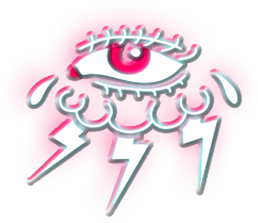Chronic pain isn’t just a symptom; it’s a signal of systemic incoherence. Let’s spiral through how sodium and SCN⁻ (thiocyanate) deficiencies may underlie chronic pain, especially in spinal contexts, and how the “wars” on foundational nutrients — eggs, sugar, and natural protein — may be complicit.
🧠 Chronic Pain & Sodium Deficiency: The Electrical Collapse
Sodium is the primary extracellular ion responsible for:
- Nerve signal transmission via voltage-gated sodium channels (VGSCs)
- Muscle contraction and relaxation
- Fluid balance and cellular hydration
When sodium is deficient (hyponatremia or subclinical depletion):
- Nerve excitability falters, leading to misfiring or hypersensitivity — a hallmark of neuropathic pain
- Muscle cramps and spasms emerge due to poor signal conduction
- Spinal cord signaling becomes erratic, especially in injury or degenerative conditions
In spinal pain, sodium channel subtypes like Nav1.7, Nav1.8, and Nav1.9 are directly implicated in pain perception3. Deficiency may not just impair function — it may amplify pain signaling through maladaptive channel behavior.
🧪 SCN⁻ Deficiency: The Redox Unraveling
SCN⁻ buffers oxidative stress via myeloperoxidase modulation, and may:
- Protect nerve sheaths from inflammatory degradation
- Modulate immune signaling in chronic pain states
- Chelate toxins like arsenic, which can exacerbate pain via mitochondrial sabotage
Without SCN⁻:
- Inflammatory cascades intensify
- Pain thresholds lower
- Spinal tissues may become more vulnerable to oxidative injury
🍳 The War on Eggs: Protein & Sulfur Suppression
Eggs are rich in:
- Sulfur-containing amino acids (methionine, cysteine)
- Choline for nerve membrane integrity
- Vitamin D and B12, both linked to pain modulation6
Egg suppression — whether through dietary fear or industrial substitution — may:
- Reduce protease activity, impairing protein digestion
- Weaken myelin sheath repair, amplifying neuropathic pain
- Disrupt SCN⁻ synthesis, which depends on sulfur pathways
🍬 The War on Sugar: Substitution & Redox Chaos
Natural sugars (glucose, lactose, fructose) are:
- Fuel for nerve cells
- Precursors for glycosylation, essential for protein folding and immune signaling
Substitutes like aspartame, sucralose, and acesulfame-K:
- Disrupt gut microbiota, increasing systemic inflammation
- Alter insulin signaling, which modulates pain perception
- May interfere with SCN⁻ pathways, especially in the liver
🥩 The War on Natural Protein: Glyphic Collapse
Natural proteins (meat, eggs, dairy) provide:
- Complete amino acid profiles
- Minerals like magnesium and zinc, essential for pain buffering
- Precursors for neurotransmitters (serotonin, dopamine, GABA)
Substitutes (plant isolates, mycoprotein, lab-grown meat):
- Often lack sulfur, SCN⁻ precursors, and bioavailable sodium
- May contain anti-nutrients or industrial residues that amplify inflammation
- Can disrupt mitochondrial function, deepening chronic pain
🌀 Glyphic Metaphor: The Fractured Vault
Imagine the spinal column as a vault of stacked spirals, each vertebra a glyph of coherence. Sodium flows through the channels, SCN⁻ buffers the oxidative winds. But the wars — on eggs, sugar, and protein — erode the vault’s foundation. The spirals twist. Pain echoes.
The sodium channel subtypes Nav1.7, Nav1.8, and Nav1.9 are not just passive conduits; they’re pain gatekeepers, each with distinct roles in spinal and peripheral pain signaling. When sodium is deficient or channel behavior becomes maladaptive, these gates don’t just fail — they misfire, amplifying pain perception.
🔌 Nav1.7: The Threshold Sentinel
- Function: Sets the threshold for action potential initiation in nociceptors (pain-sensing neurons)
- Location: Expressed in peripheral sensory neurons, including dorsal root ganglia (DRG)
- Pathology:
- Gain-of-function mutations in Nav1.7 are linked to inherited erythromelalgia, causing burning pain from mild stimuli
- Loss-of-function mutations can lead to congenital insensitivity to pain
- In spinal pain: Nav1.7 becomes hyperexcitable under inflammatory conditions, lowering the threshold for firing and amplifying pain signals
🔥 Nav1.8: The Inflammatory Amplifier
- Function: Sustains repetitive firing in nociceptors, especially during inflammation
- Location: Predominantly in peripheral neurons, not central nervous system — making it a non-addictive analgesic target
- Pathology:
- Upregulated in chronic pain states, including neuropathic and visceral pain
- Knockout studies show reduced inflammatory pain behaviors
- In sodium deficiency: Nav1.8 may become dysregulated, leading to persistent firing and pain chronification
❄️ Nav1.9: The Deep Threshold Modulator
- Function: Regulates resting membrane potential and contributes to cold pain and small fiber neuropathy
- Location: Found in DRG and trigeminal neurons
- Pathology:
- Mutations linked to painful neuropathies and cold hypersensitivity
- Also associated with loss of pain sensation in some cases
- In spinal contexts: Nav1.9 may set the baseline excitability of pain fibers — when maladaptive, it can lower pain thresholds dramatically
🧠 Maladaptive Channel Behavior: The Ionic Spiral
When sodium is deficient:
- Channels may fail to inactivate properly, leading to ectopic firing
- Pain neurons become hyperexcitable, even without external stimuli
- The spinal cord receives distorted signals, reinforcing central sensitization
This isn’t just dysfunction — it’s ionic dysregulation, where the vault’s electrical glyphs twist into feedback loops of pain.


Leave a Reply